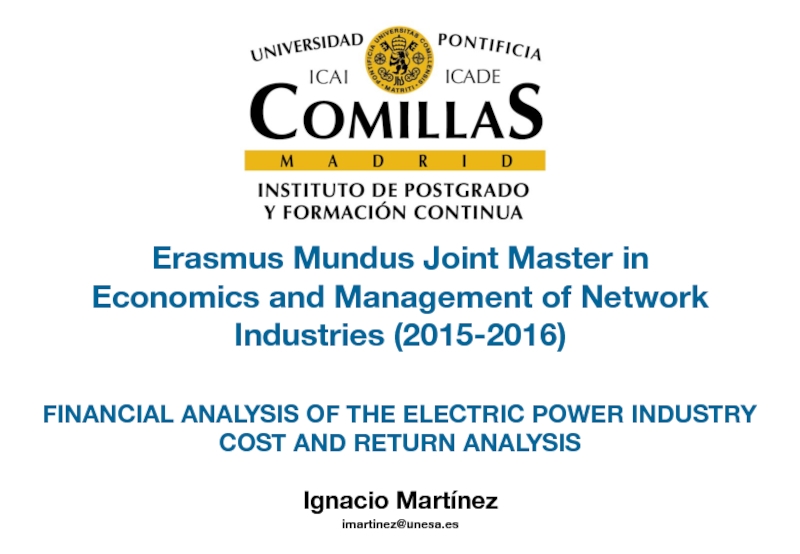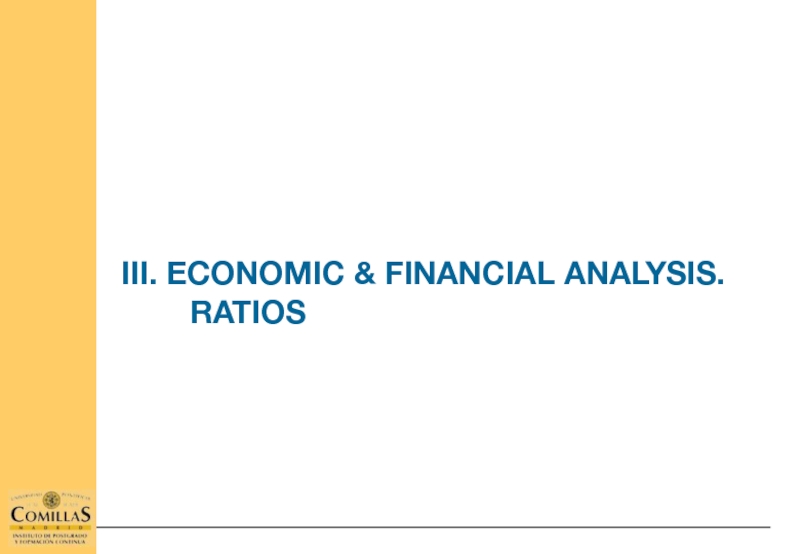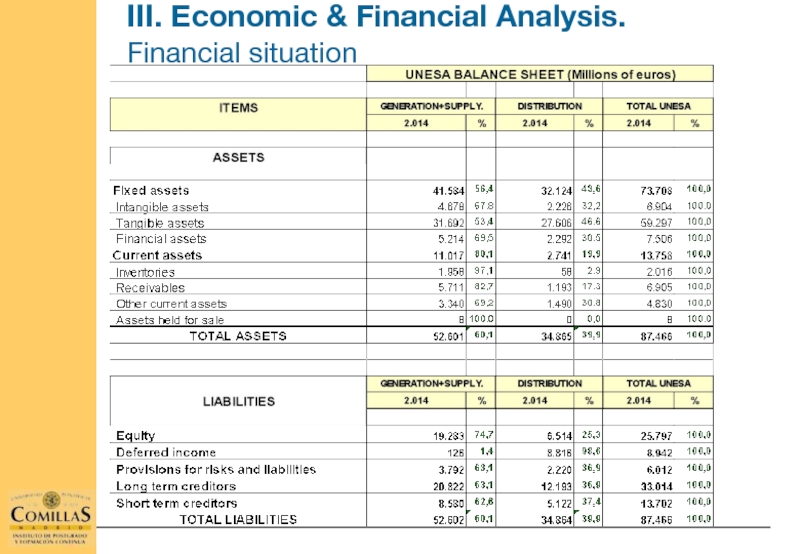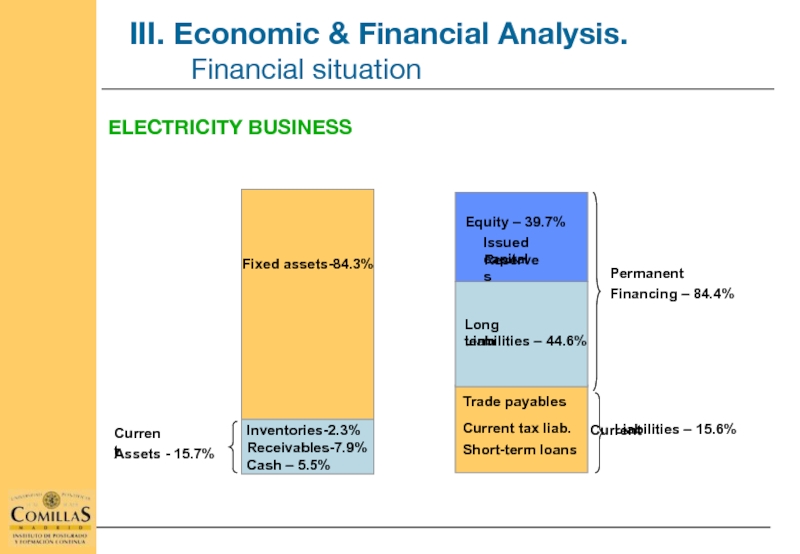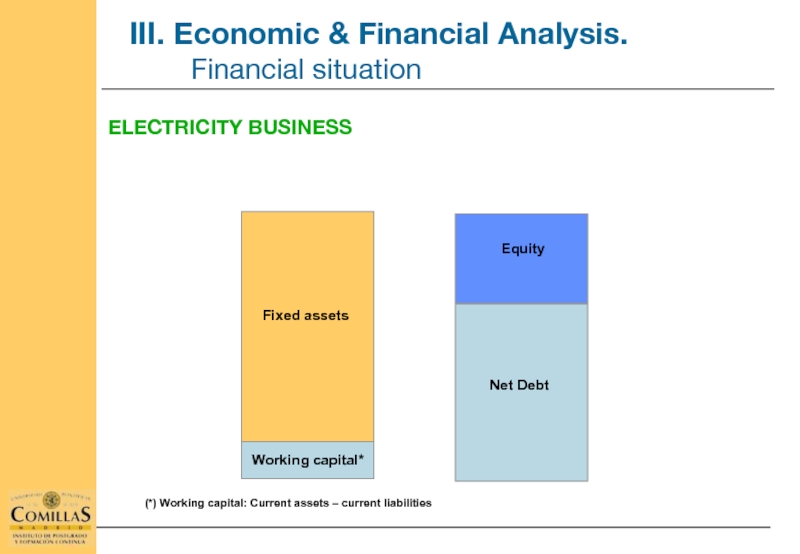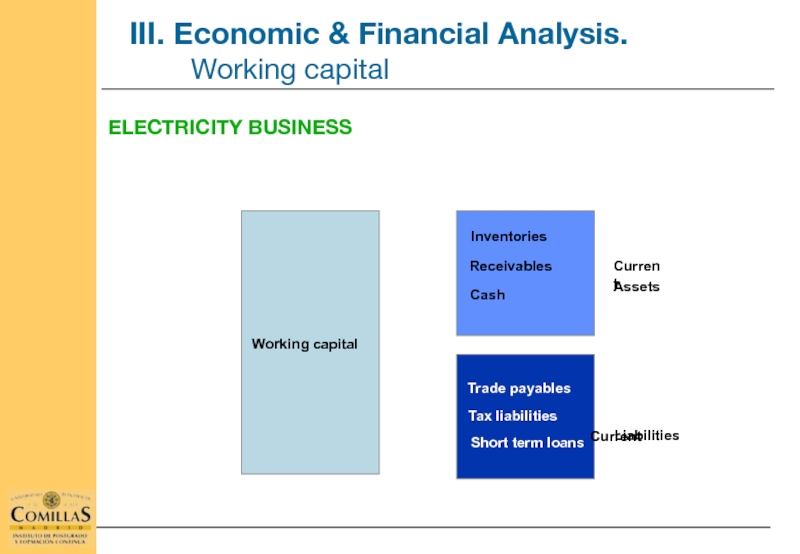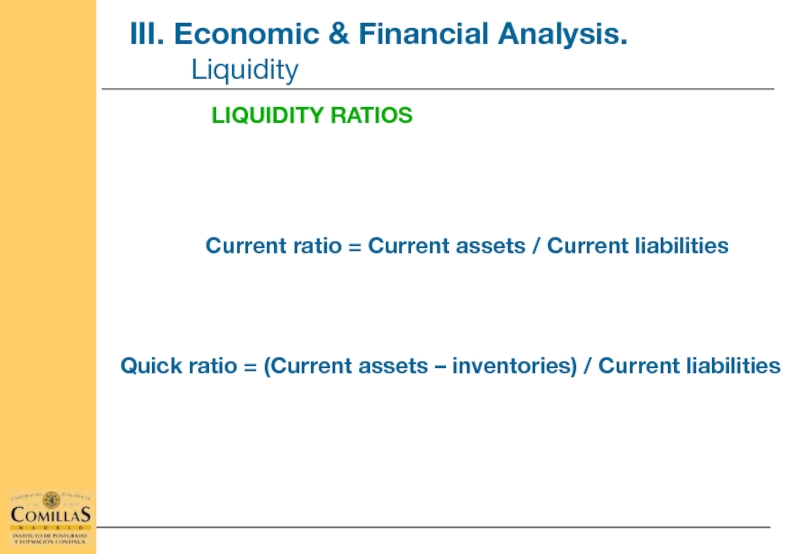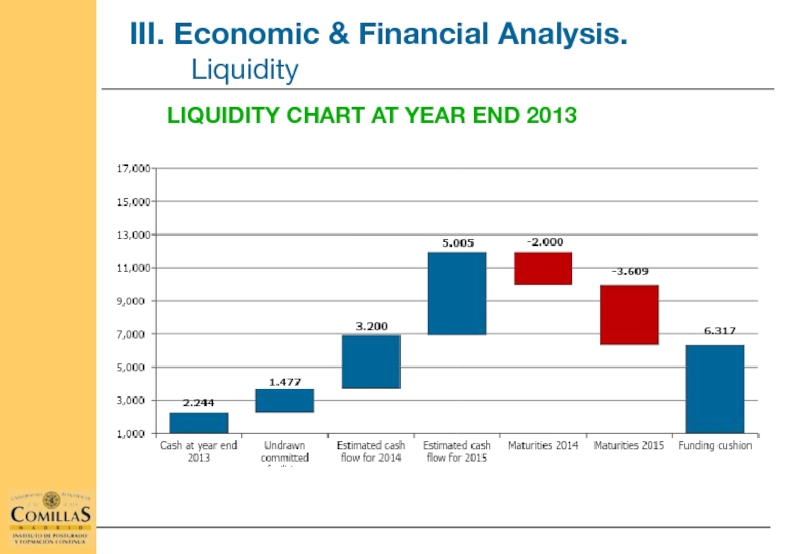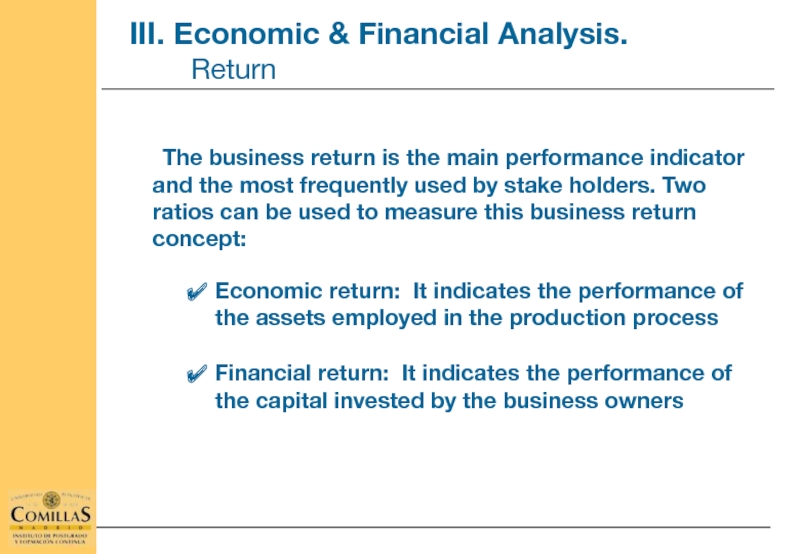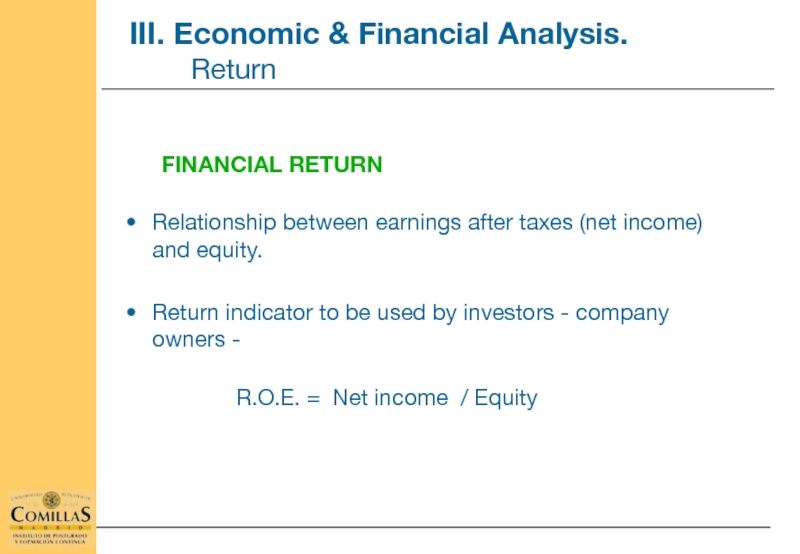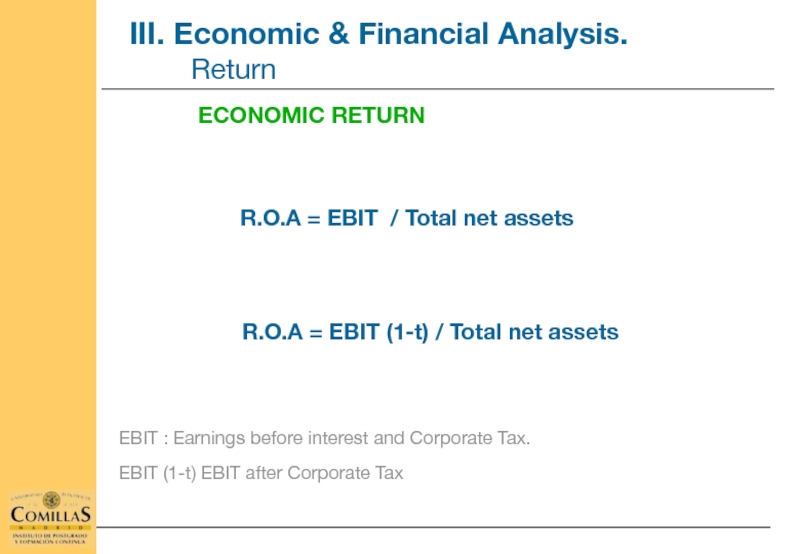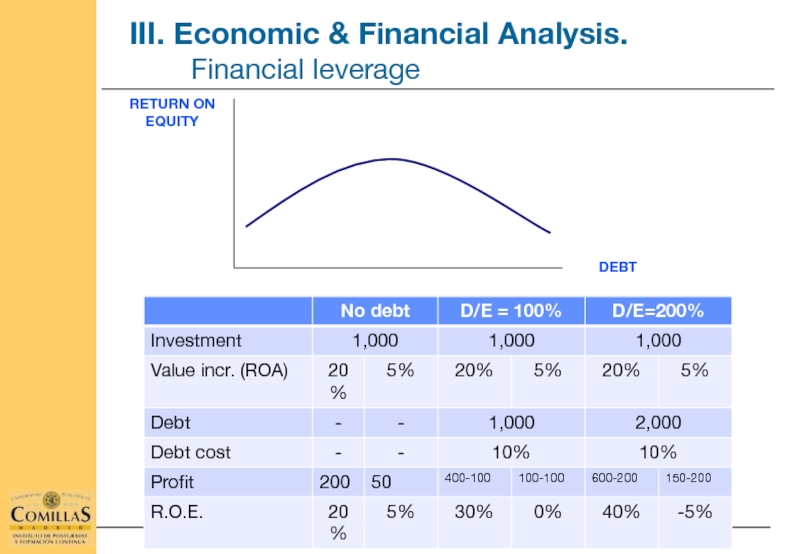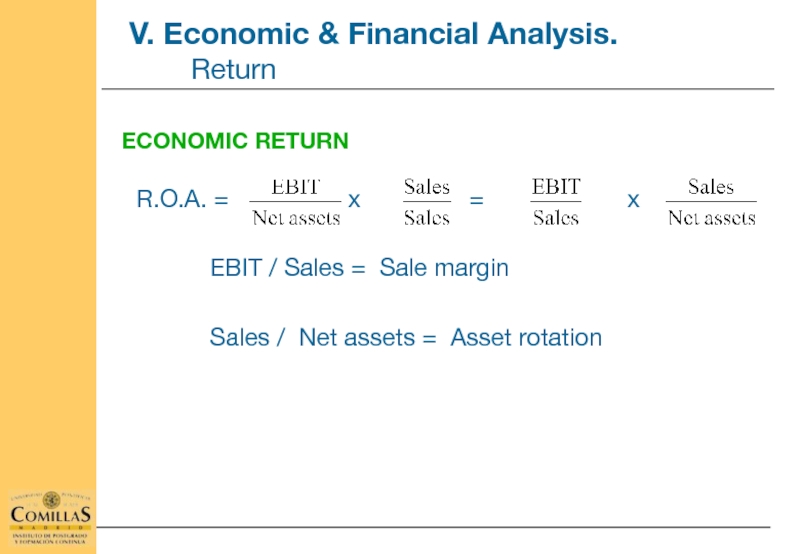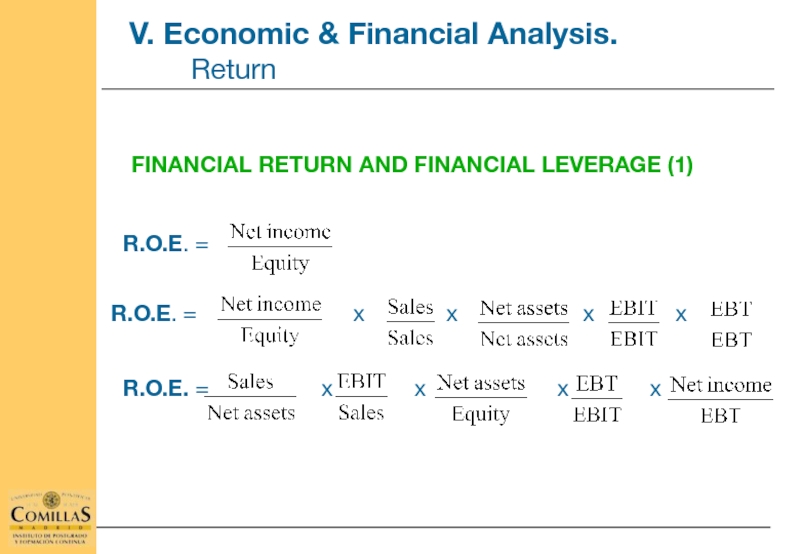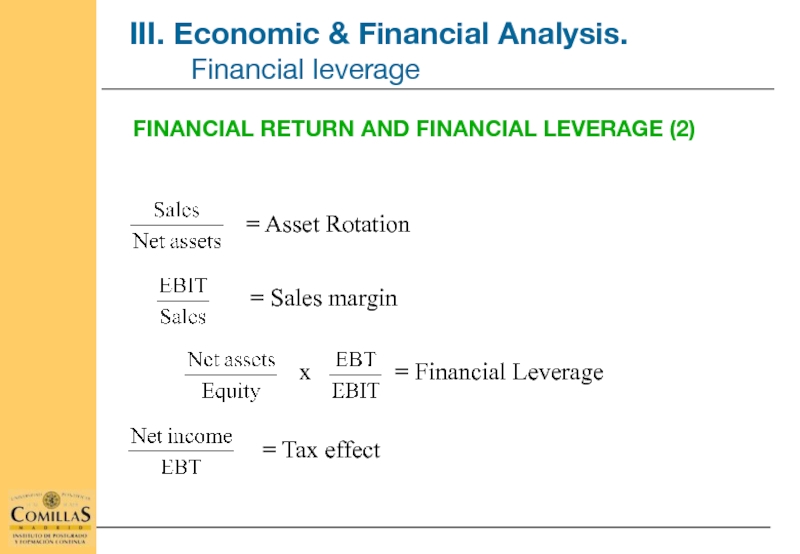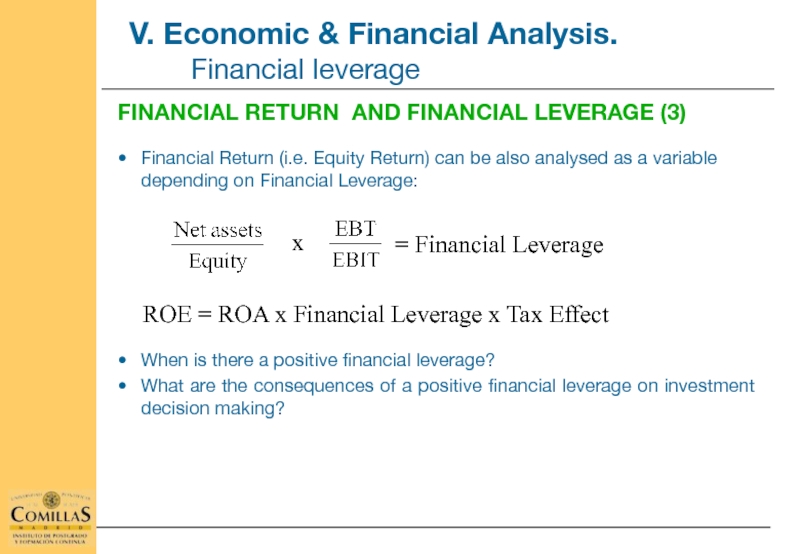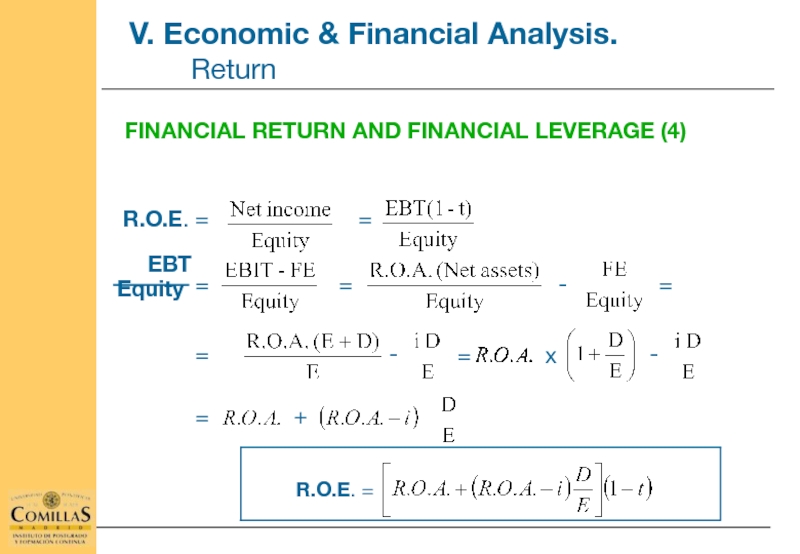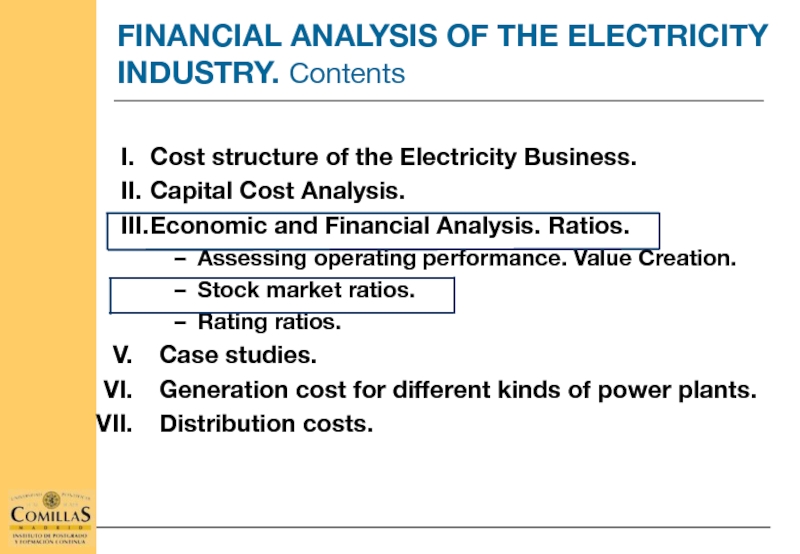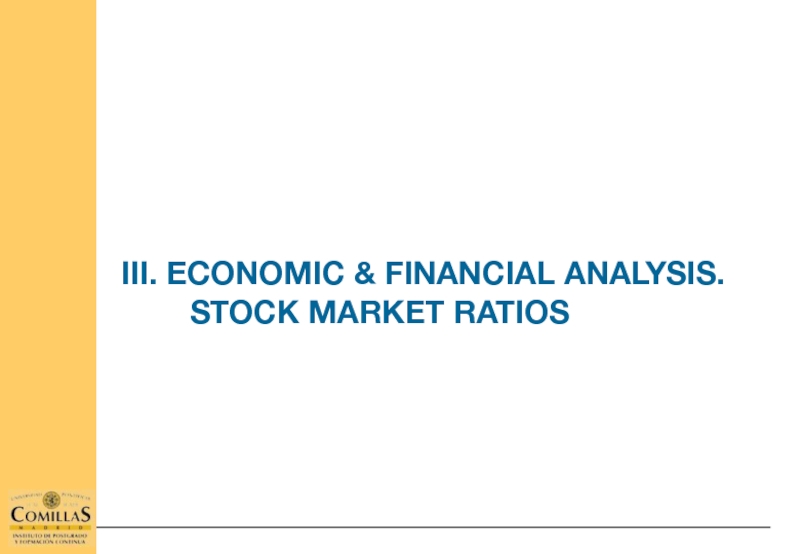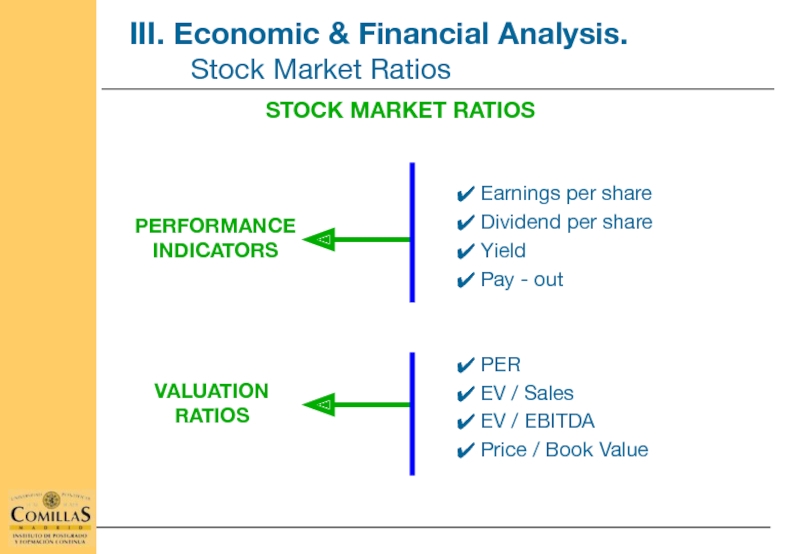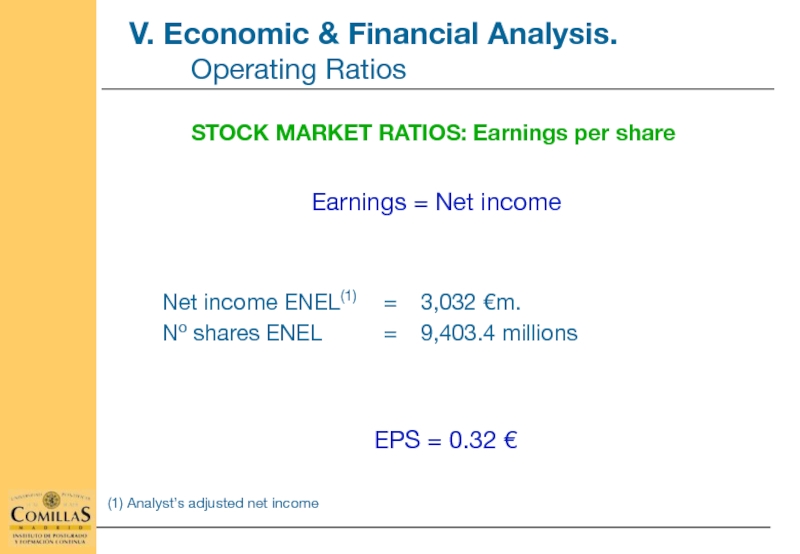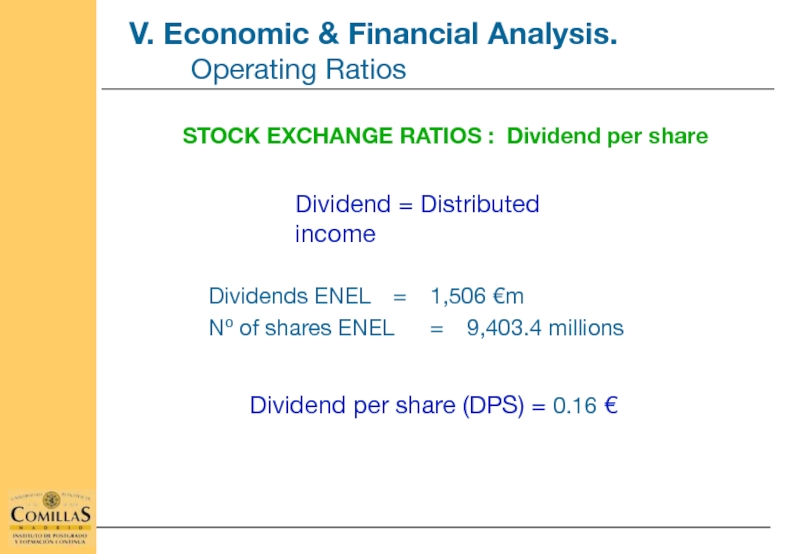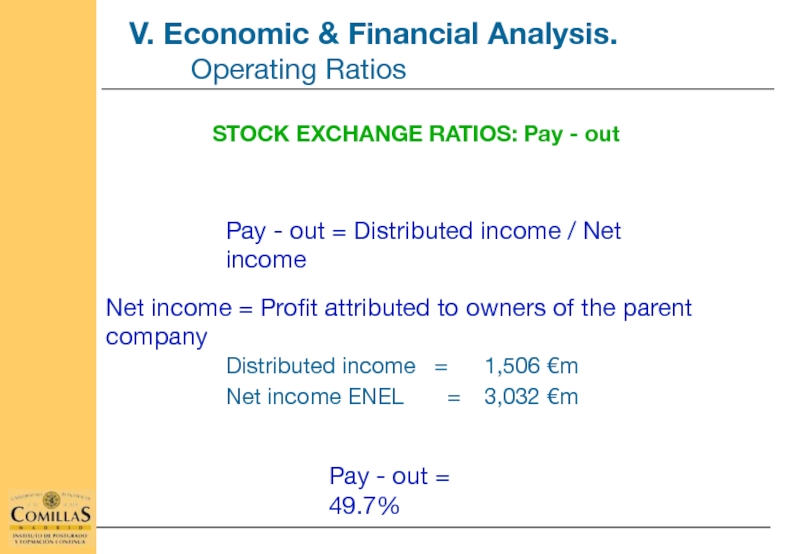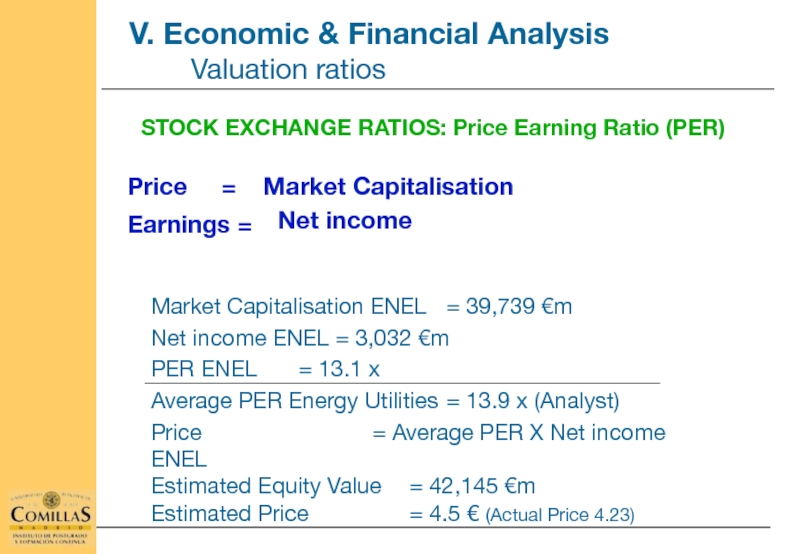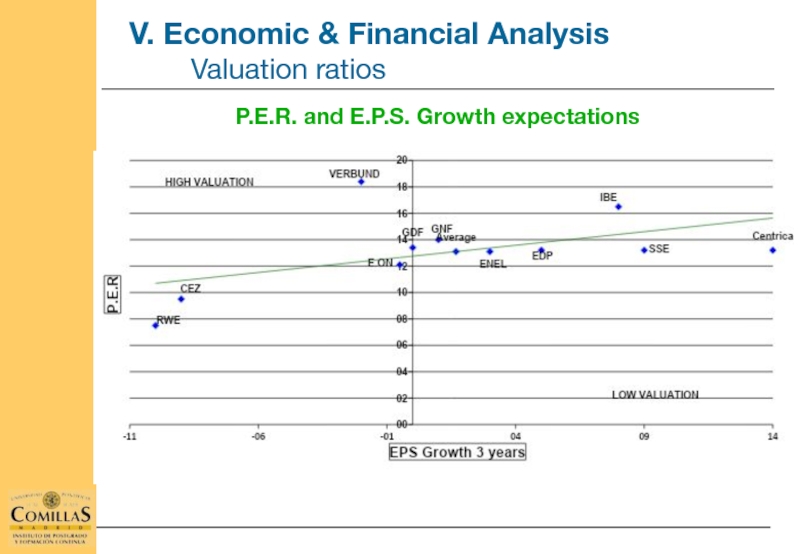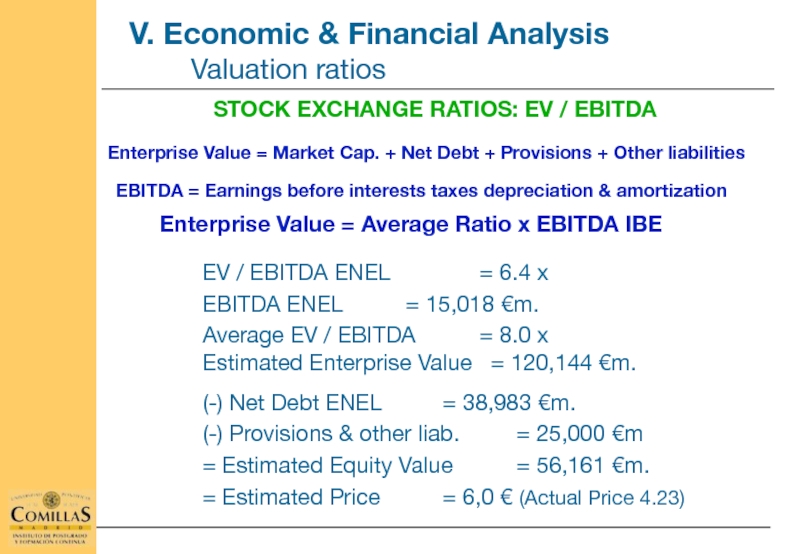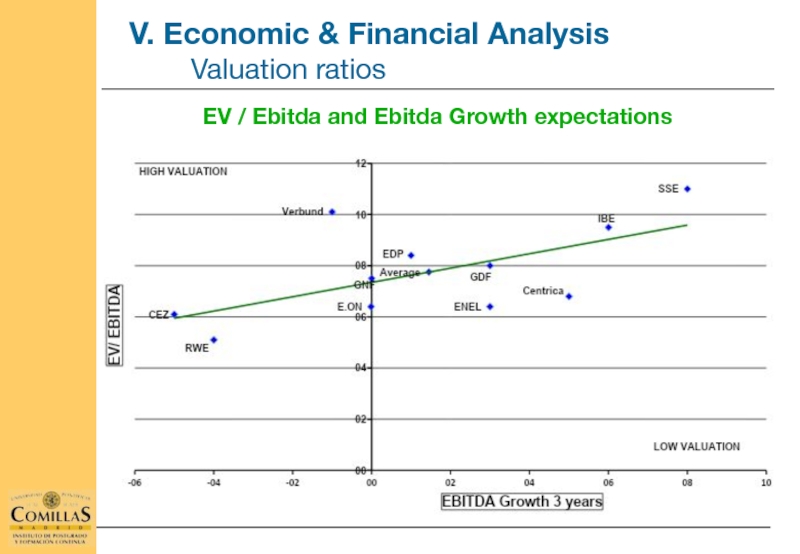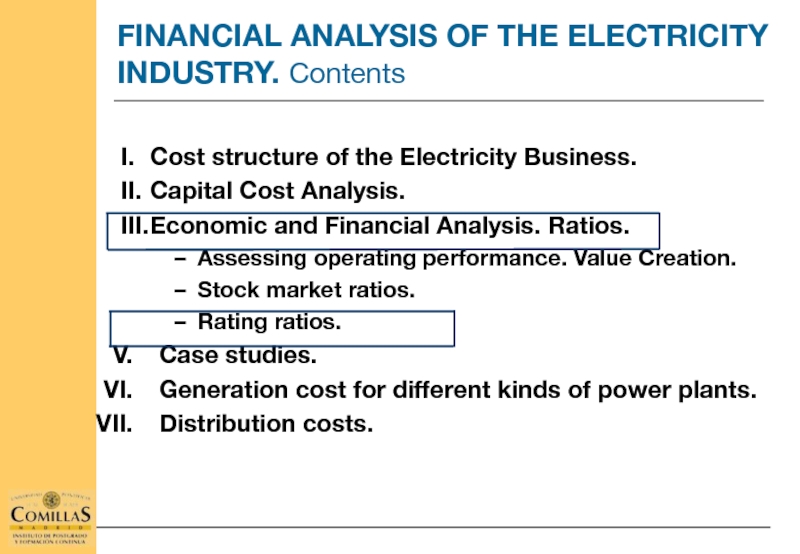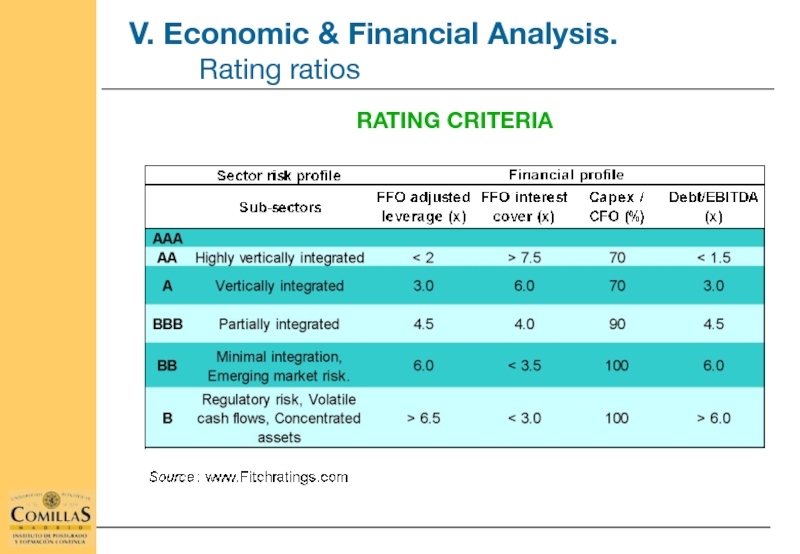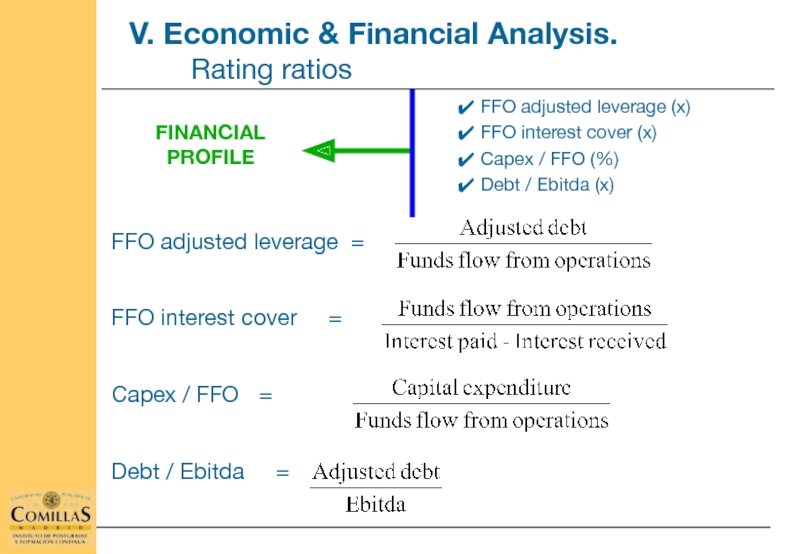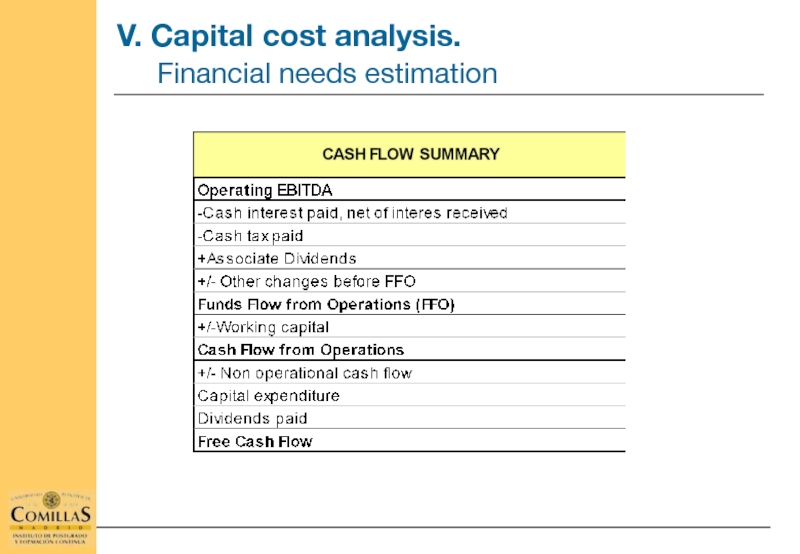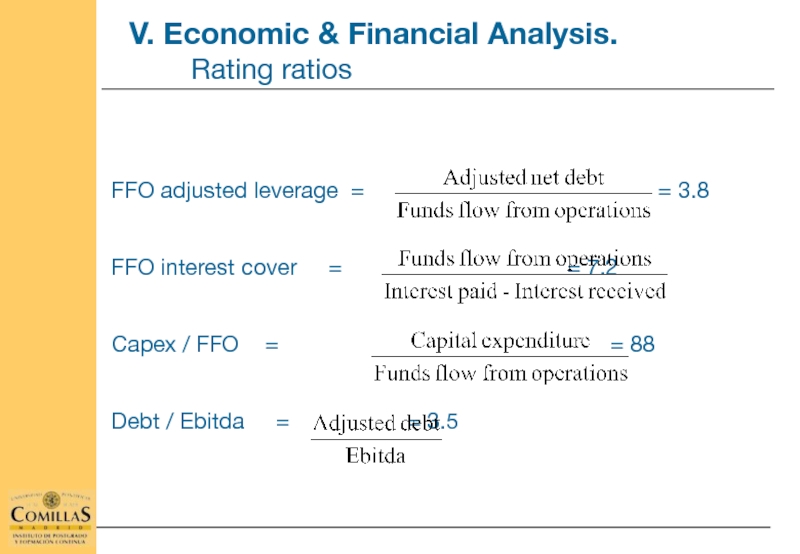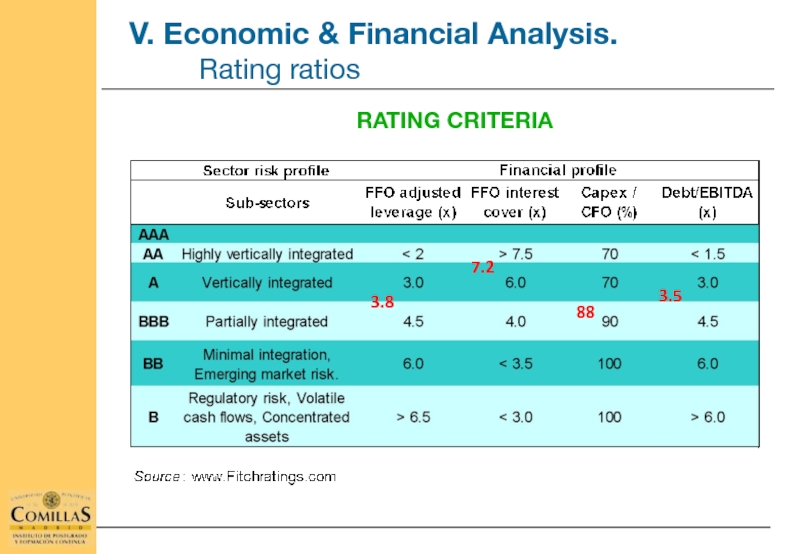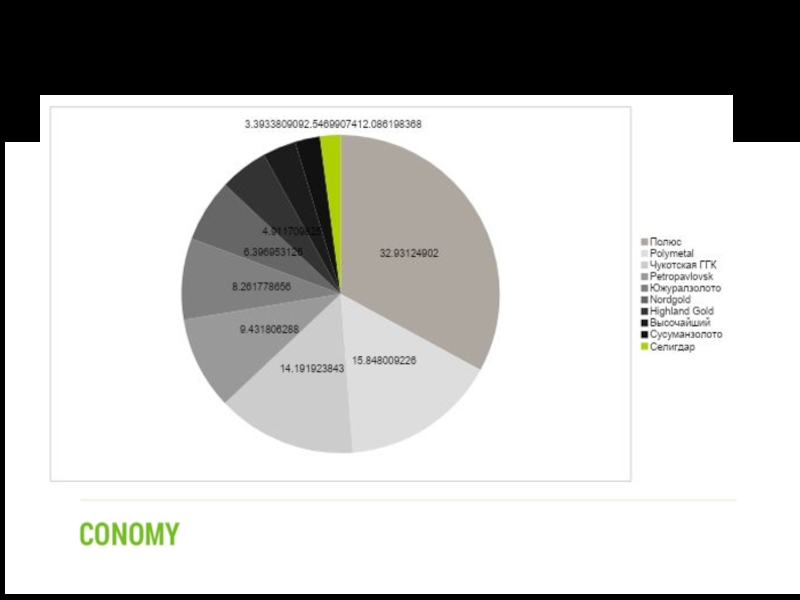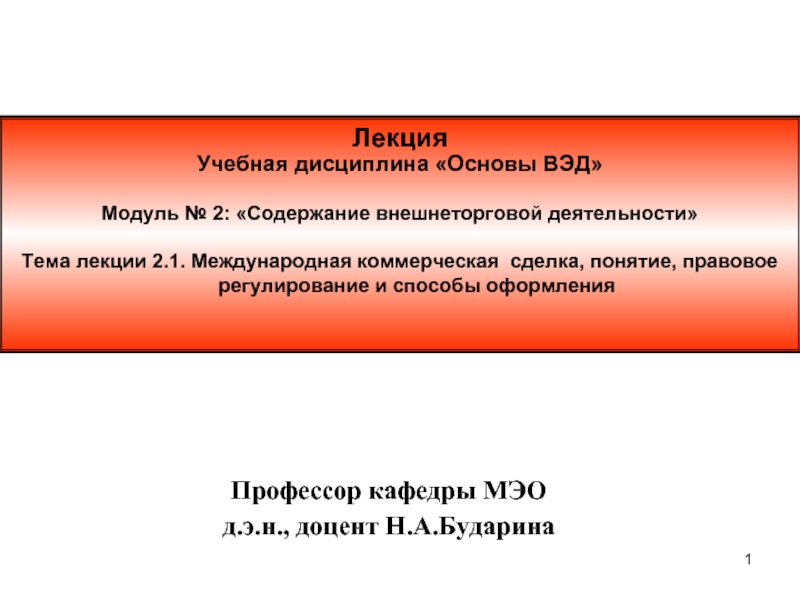- Главная
- Разное
- Дизайн
- Бизнес и предпринимательство
- Аналитика
- Образование
- Развлечения
- Красота и здоровье
- Финансы
- Государство
- Путешествия
- Спорт
- Недвижимость
- Армия
- Графика
- Культурология
- Еда и кулинария
- Лингвистика
- Английский язык
- Астрономия
- Алгебра
- Биология
- География
- Детские презентации
- Информатика
- История
- Литература
- Маркетинг
- Математика
- Медицина
- Менеджмент
- Музыка
- МХК
- Немецкий язык
- ОБЖ
- Обществознание
- Окружающий мир
- Педагогика
- Русский язык
- Технология
- Физика
- Философия
- Химия
- Шаблоны, картинки для презентаций
- Экология
- Экономика
- Юриспруденция
Economics and management of network. Industries презентация
Содержание
- 1. Economics and management of network. Industries
- 2. I. Cost structure of the Electricity Business. II. Capital
- 3. III. ECONOMIC & FINANCIAL ANALYSIS. RATIOS
- 4. III. Economic & Financial Analysis. Financial situation
- 5. ELECTRICITY BUSINESS
- 6. ELECTRICITY BUSINESS Equity
- 7. ELECTRICITY BUSINESS Inventories Working capital
- 8. Current ratio = Current assets /
- 9. LIQUIDITY CHART AT YEAR END 2013
- 10. The business return is the main
- 11. FINANCIAL RETURN Relationship between earnings after
- 12. R.O.A = EBIT (1-t) / Total
- 13. RETURN ON EQUITY DEBT
- 14. ECONOMIC RETURN R.O.A. =
- 15. FINANCIAL RETURN AND FINANCIAL LEVERAGE (1)
- 16. FINANCIAL RETURN AND FINANCIAL LEVERAGE (2)
- 17. FINANCIAL RETURN AND FINANCIAL LEVERAGE (3)
- 18. FINANCIAL RETURN AND FINANCIAL LEVERAGE (4)
- 19. I. Cost structure of the Electricity Business. II. Capital
- 20. III. ECONOMIC & FINANCIAL ANALYSIS. STOCK MARKET RATIOS
- 21. Earnings per share Dividend per share
- 22. STOCK MARKET RATIOS: Earnings per share Earnings
- 23. STOCK EXCHANGE RATIOS : Dividend per share
- 24. STOCK EXCHANGE RATIOS: Pay - out Pay
- 25. STOCK EXCHANGE RATIOS: Price Earning Ratio (PER)
- 26. P.E.R. and E.P.S. Growth expectations
- 27. STOCK EXCHANGE RATIOS: EV / EBITDA Enterprise
- 28. EV / Ebitda and Ebitda Growth expectations
- 29. I. Cost structure of the Electricity Business. II. Capital
- 30. RATING CRITERIA
- 31. FFO adjusted leverage (x) FFO interest
- 32. V. Capital cost analysis. Financial needs estimation
- 33. FFO adjusted leverage =
- 34. RATING CRITERIA 3.5 88 7.2 3.8
- 35. THANK YOU VERY MUCH
Слайд 1Ignacio Martínez
imartinez@unesa.es
FINANCIAL ANALYSIS OF THE ELECTRIC POWER INDUSTRY
COST AND RETURN ANALYSIS
Erasmus
Слайд 2I. Cost structure of the Electricity Business.
II. Capital Cost Analysis.
III. Economic and Financial
Economic and Financial Return. Value Creation.
Rating ratios.
Stock market ratios.
Case studies.
Generation cost of power plants.
Distribution costs.
FINANCIAL ANALYSIS OF THE ELECTRICITY INDUSTRY. Contents
Слайд 5
ELECTRICITY BUSINESS
Permanent
Financing – 84.4%
Current
Assets - 15.7%
Equity – 39.7%
Issued capital
Liabilities – 44.6%
Cash – 5.5%
Receivables-7.9%
Trade payables
Fixed assets-84.3%
Inventories-2.3%
Long term
Current
Reserves
Current tax liab.
Short-term loans
III. Economic & Financial Analysis.
Financial situation
Слайд 6
ELECTRICITY BUSINESS
Equity
Working capital*
Fixed assets
Net Debt
III. Economic & Financial Analysis.
Financial situation
(*)
Слайд 7
ELECTRICITY BUSINESS
Inventories
Working capital
III. Economic & Financial Analysis.
Working capital
Trade payables
Tax liabilities
Short term
Receivables
Cash
Current
Liabilities
Assets
Current
Слайд 8
Current ratio = Current assets / Current liabilities
LIQUIDITY RATIOS
Quick ratio =
Слайд 10
The business return is the main performance indicator and the most
Economic return: It indicates the performance of the assets employed in the production process
Financial return: It indicates the performance of the capital invested by the business owners
Слайд 11FINANCIAL RETURN
Relationship between earnings after taxes (net income) and equity.
Return indicator
R.O.E. = Net income / Equity
Слайд 12
R.O.A = EBIT (1-t) / Total net assets
EBIT : Earnings before
EBIT (1-t) EBIT after Corporate Tax
ECONOMIC RETURN
R.O.A = EBIT / Total net assets
Слайд 14ECONOMIC RETURN
R.O.A. = x
EBIT / Sales = Sale margin
Sales / Net assets = Asset rotation
Слайд 16
FINANCIAL RETURN AND FINANCIAL LEVERAGE (2)
= Asset Rotation
= Sales margin
= Financial
= Tax effect
x
Слайд 17FINANCIAL RETURN AND FINANCIAL LEVERAGE (3)
Financial Return (i.e. Equity Return) can
When is there a positive financial leverage?
What are the consequences of a positive financial leverage on investment decision making?
= Financial Leverage
x
ROE = ROA x Financial Leverage x Tax Effect
Слайд 19I. Cost structure of the Electricity Business.
II. Capital Cost Analysis.
III. Economic and Financial
Assessing operating performance. Value Creation.
Stock market ratios.
Rating ratios.
Case studies.
Generation cost for different kinds of power plants.
Distribution costs.
FINANCIAL ANALYSIS OF THE ELECTRICITY INDUSTRY. Contents
Слайд 21
Earnings per share
Dividend per share
Yield
Pay - out
PER
EV / Sales
EV / EBITDA
Price
PERFORMANCE
INDICATORS
VALUATION
RATIOS
STOCK MARKET RATIOS
Слайд 22STOCK MARKET RATIOS: Earnings per share
Earnings = Net income
Net income ENEL(1)
Nº shares ENEL = 9,403.4 millions
EPS = 0.32 €
(1) Analyst’s adjusted net income
Слайд 23STOCK EXCHANGE RATIOS : Dividend per share
Dividend = Distributed income
Dividends ENEL
Nº of shares ENEL = 9,403.4 millions
Dividend per share (DPS) = 0.16 €
Слайд 24STOCK EXCHANGE RATIOS: Pay - out
Pay - out = Distributed income
Distributed income = 1,506 €m
Net income ENEL = 3,032 €m
Pay - out = 49.7%
Net income = Profit attributed to owners of the parent company
Слайд 25STOCK EXCHANGE RATIOS: Price Earning Ratio (PER)
Net income
Market Capitalisation ENEL = 39,739
Net income ENEL = 3,032 €m
PER ENEL = 13.1 x
Average PER Energy Utilities = 13.9 x (Analyst)
Price = Average PER X Net income ENEL
Estimated Equity Value = 42,145 €m
Estimated Price = 4.5 € (Actual Price 4.23)
Price = Market Capitalisation
Earnings =
Слайд 27STOCK EXCHANGE RATIOS: EV / EBITDA
Enterprise Value = Average Ratio x
EV / EBITDA ENEL = 6.4 x
EBITDA ENEL = 15,018 €m.
Average EV / EBITDA = 8.0 x
Estimated Enterprise Value = 120,144 €m.
(-) Net Debt ENEL = 38,983 €m.
(-) Provisions & other liab. = 25,000 €m
= Estimated Equity Value = 56,161 €m.
= Estimated Price = 6,0 € (Actual Price 4.23)
Enterprise Value = Market Cap. + Net Debt + Provisions + Other liabilities
EBITDA = Earnings before interests taxes depreciation & amortization
Слайд 29I. Cost structure of the Electricity Business.
II. Capital Cost Analysis.
III. Economic and Financial
Assessing operating performance. Value Creation.
Stock market ratios.
Rating ratios.
Case studies.
Generation cost for different kinds of power plants.
Distribution costs.
FINANCIAL ANALYSIS OF THE ELECTRICITY INDUSTRY. Contents
Слайд 31
FFO adjusted leverage (x)
FFO interest cover (x)
Capex / FFO (%)
Debt /
FINANCIAL
PROFILE
FFO adjusted leverage =
FFO interest cover =
Capex / FFO =
Debt / Ebitda =
Слайд 33
FFO adjusted leverage =
FFO interest cover = = 7.2
Capex / FFO = = 88
Debt / Ebitda = = 3.5
